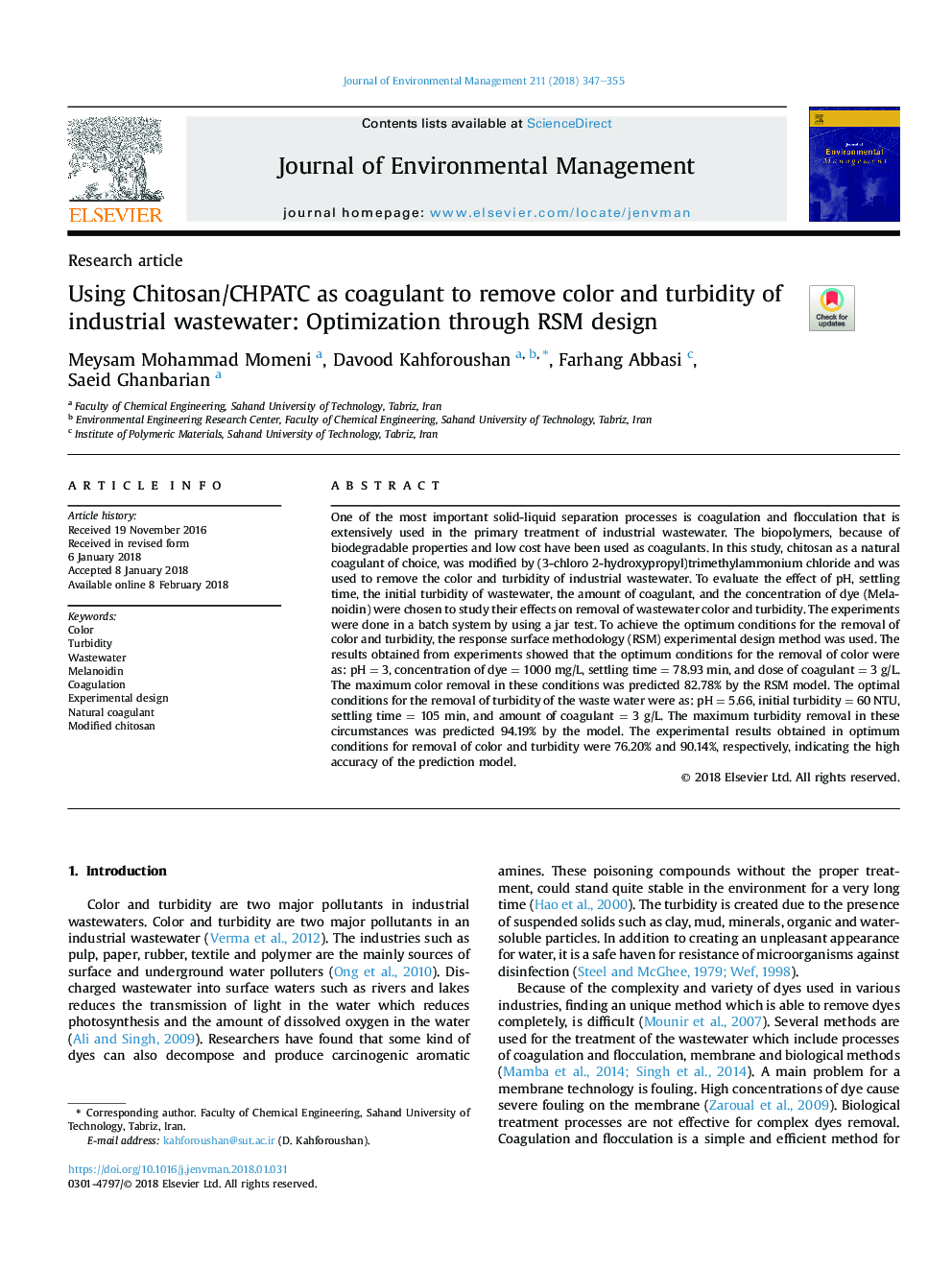| کد مقاله | کد نشریه | سال انتشار | مقاله انگلیسی | نسخه تمام متن |
|---|---|---|---|---|
| 7478328 | 1485207 | 2018 | 9 صفحه PDF | دانلود رایگان |
عنوان انگلیسی مقاله ISI
Using Chitosan/CHPATC as coagulant to remove color and turbidity of industrial wastewater: Optimization through RSM design
دانلود مقاله + سفارش ترجمه
دانلود مقاله ISI انگلیسی
رایگان برای ایرانیان
کلمات کلیدی
موضوعات مرتبط
مهندسی و علوم پایه
مهندسی انرژی
انرژی های تجدید پذیر، توسعه پایدار و محیط زیست
پیش نمایش صفحه اول مقاله

چکیده انگلیسی
One of the most important solid-liquid separation processes is coagulation and flocculation that is extensively used in the primary treatment of industrial wastewater. The biopolymers, because of biodegradable properties and low cost have been used as coagulants. In this study, chitosan as a natural coagulant of choice, was modified by (3-chloro 2-hydroxypropyl)trimethylammonium chloride and was used to remove the color and turbidity of industrial wastewater. To evaluate the effect of pH, settling time, the initial turbidity of wastewater, the amount of coagulant, and the concentration of dye (Melanoidin) were chosen to study their effects on removal of wastewater color and turbidity. The experiments were done in a batch system by using a jar test. To achieve the optimum conditions for the removal of color and turbidity, the response surface methodology (RSM) experimental design method was used. The results obtained from experiments showed that the optimum conditions for the removal of color were as: pH = 3, concentration of dye = 1000 mg/L, settling time = 78.93 min, and dose of coagulant = 3 g/L. The maximum color removal in these conditions was predicted 82.78% by the RSM model. The optimal conditions for the removal of turbidity of the waste water were as: pH = 5.66, initial turbidity = 60 NTU, settling time = 105 min, and amount of coagulant = 3 g/L. The maximum turbidity removal in these circumstances was predicted 94.19% by the model. The experimental results obtained in optimum conditions for removal of color and turbidity were 76.20% and 90.14%, respectively, indicating the high accuracy of the prediction model.
ناشر
Database: Elsevier - ScienceDirect (ساینس دایرکت)
Journal: Journal of Environmental Management - Volume 211, 1 April 2018, Pages 347-355
Journal: Journal of Environmental Management - Volume 211, 1 April 2018, Pages 347-355
نویسندگان
Meysam Mohammad Momeni, Davood Kahforoushan, Farhang Abbasi, Saeid Ghanbarian,